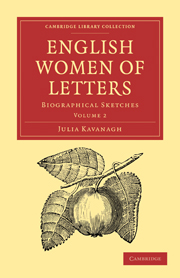Summary
Every now and then there breaks on the somewhat monotonous world of fiction some new book, fresh, romantic, improbable, and wild; the offspring of youth or inexperience, full of faults so glaring that the poorest critic can discern them, yet, with all that, lively, happy in subject, happier in manner as distinct from style, and which reaches popularity and retains it when far better written works—works, too, much beyond it in some of the most important qualifications of fiction—slowly toil their way to repute, or, worse still, never reach those fair and tempting heights. Such a work, we think, was Miss Owenson's novel of “The Wild Irish Girl.” The incidents were not very probable, nor always well told; the sentiment was exaggerated, sometimes to absurdity; the style, though vivid, was not good; there was no great originality of conception in the story, no great art in the way in which it was conducted; yet, spite these deficiencies, it was a delightful book, and half a century has not exhausted its power to please.
Books, too, have their youth, like women and men—a youth which is always enchanting—and “The Wild Irish Girl” was a very young book. Miss Owenson took Mrs. Radcliffe's romantic castles without their terror or their gloom; she gave Southern grace to the green valleys and the wild shores of Connaught, and sunshine bright and clear to the soft clouded skies of Ireland.
- Type
- Chapter
- Information
- English Women of LettersBiographical Sketches, pp. 306 - 353Publisher: Cambridge University PressPrint publication year: 2010First published in: 1863

